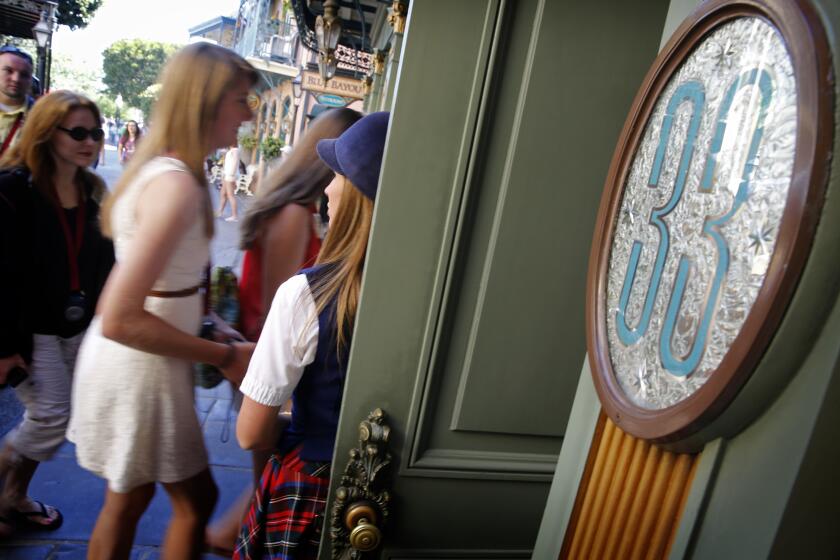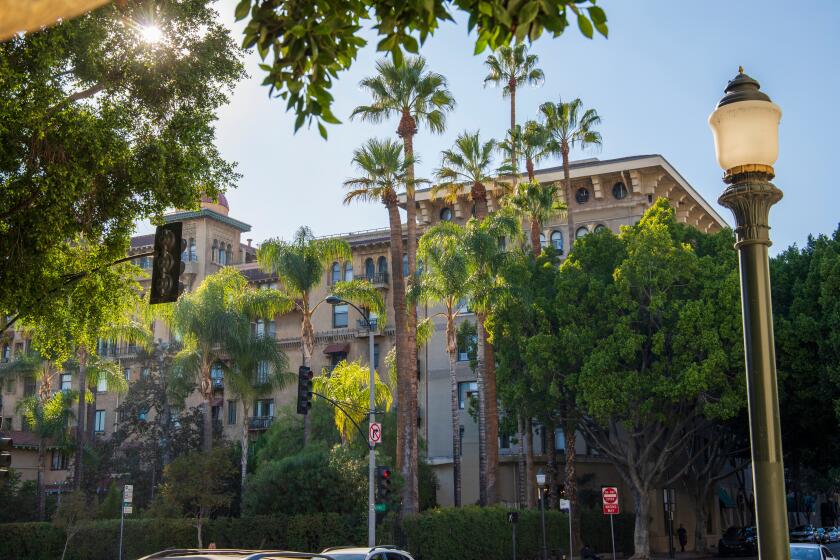Rodriguez: The ‘Mad Men’ mystique
- Share via
Who the heck would want to be like Betty or her ad man ex, Don?
That’s what I asked myself recently when I passed a Banana Republic window display featuring the retailer’s new “Mad Men”-inspired clothing collection.
“Are you a Betty?” read a poster with a lustrous photograph of a thin, blond model looking almost as uptight and miserable as the former Mrs. Draper in the Emmy-winning AMC television series.
There’s little doubt that “Mad Men’s” sleek style and handsome characters play a part in the program’s appeal. And that in itself might explain the clothing line. But the launch of two new “Mad Men”-inspired drama series — ABC’s “Pan Am” and NBC’s now-canceled “The Playboy Club” — suggests that the enthusiasm for all things early 1960s might run deeper than meets the eye.
Several critics have argued that “Mad Men’s” depiction of the era’s endless drinking, smoking and office sexcapades appeals to its viewers’ desire to transcend today’s prohibitions (at least within office culture) against overt sexism, racism or harassment. But I think the exact opposite is true. Our fascination with the early 1960s stems from a longing for authority.
What these shows are selling — and what “Mad Men” excels at — are stories of characters fighting to achieve personal liberation in the restless years before the advent of the full-blown culture wars. Other 1960s narratives focus on the free-spirited joys and excesses that marked the end of that decade and the beginning of the next, by which time authority had collapsed. But these earlier stories depict a more tightly choreographed dance between those who would be liberated but aren’t quite sure how to make it happen and those upholding the old social hierarchy.
Americans like liberation stories. Television newscasts never tire of underdogs who overcome all odds, victims who break their silences, strivers who achieve in spite of the naysayers trying to keep them down. Even consumer marketing is rife with messages of liberation and rebellion. From Volkswagen’s famous ads that suggested you could prove you weren’t a cog in the machine if you bought a Beetle to Apple’s separate-yourself-from-the-pack “Think Different” campaign, ads are constantly urging us to buy products that, once consumed, will confirm our outlaw bona fides.
But here’s the thing about the culture of liberation: It requires endless supplies of callous authority figures and systemic injustices to rebel against. It needs the bad guys whose authority we can outsmart, outrun or otherwise get over on.
In “Mad Men,” the sexism, in particular, is almost suffocating, and not in the least fun to watch. But it’s the force against which the most compelling female characters struggle, and the opposition that defines them. The interaction with everyday misogyny and condescension — the housewife whose shrink reports to her husband, the ad woman who’s cut out of the after-hours wheeling and dealing — gives the characters purpose and shape.
There are no doubt plenty of injustices to be encountered in today’s working world, even for “Mad Men’s” viewing audience, which is reported to be the wealthiest in cable TV land. But with few exceptions, in the post-civil rights era the biggest social struggles tend to be horizontal, not vertical; it’s the right versus the left, not the government versus its citizens or the majority versus the minority. The traditional moral strictures, hierarchies and institutions that Americans were beginning to buck in the early 1960s have long since given way to the culture of personal choice.
Today, the people who would keep us down are more likely to be our equals on the other side of the political fence than our superiors at work. And we can’t even find much hierarchy at home: A lot of parents today want to be their children’s friends, not their elders (count how many times Betty Draper orders her kids to bed in a typical “Mad Men” episode).
It’s this relatively new dynamic, Occidental College historian and critic Thaddeus Russell told me last week, that infuses “contemporary culture with an intense desire for controlling authority figures. To be cool in America, you have to engage in rebellion. What’s attractive about the early 1960s [is] that it is a world in which there’s still an authority figure to rebel against.”
In her recently published book, “A Nation of Outsiders: How the White Middle Class Fell in Love with Rebellion in Postwar America,” historian Grace Elizabeth Hale argues that we’re looking to resolve the tension between our need for “self-determination and autonomy” and our competing desire to be “grounded in time and place and a web of human relationships.”
Nostalgia for a time when this tension shaped our lives shouldn’t surprise us in the current moment. Increasing insecurity — economically, globally, in our personal relationships and our work — only heightens the burden of our hard-earned personal liberties. When the choices we make turn out to be the wrong ones, we have nowhere to turn and no one to blame but ourselves.
Leave it to H.L. Mencken to diagnose a social problem he didn’t live long enough to see. In 1923, he wrote that the “average man” was “not actually happy when free; he is uncomfortable, a bit alarmed, and intolerably lonely.”
I don’t think most of us are ready to give up our freedom, but watching stories about characters struggling to liberate themselves from social bias or tradition gives us a vicarious taste of what we’re missing.
grodriguez@latimescolumnists.com
More to Read
A cure for the common opinion
Get thought-provoking perspectives with our weekly newsletter.
You may occasionally receive promotional content from the Los Angeles Times.






